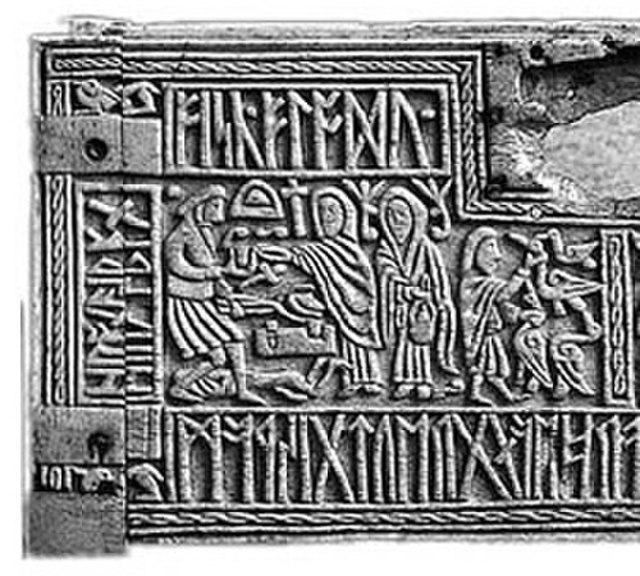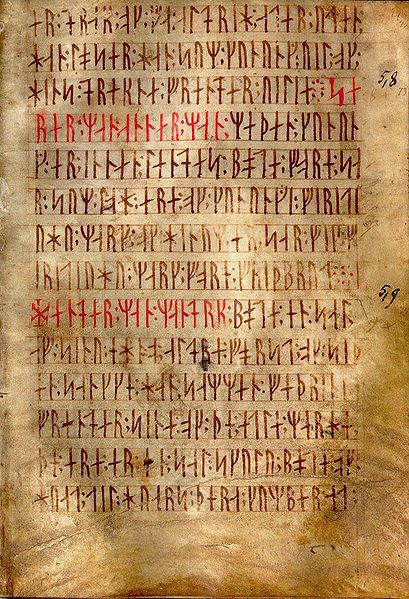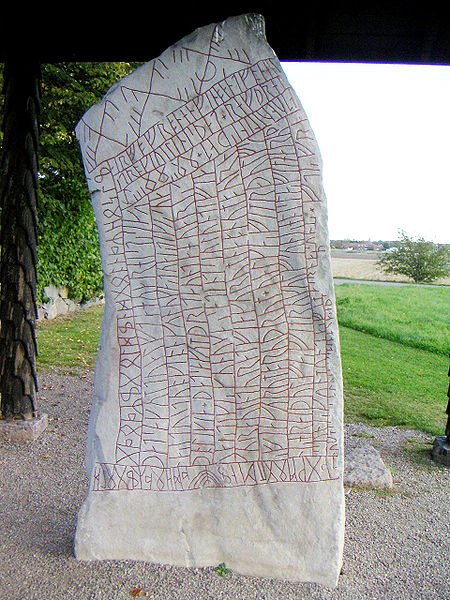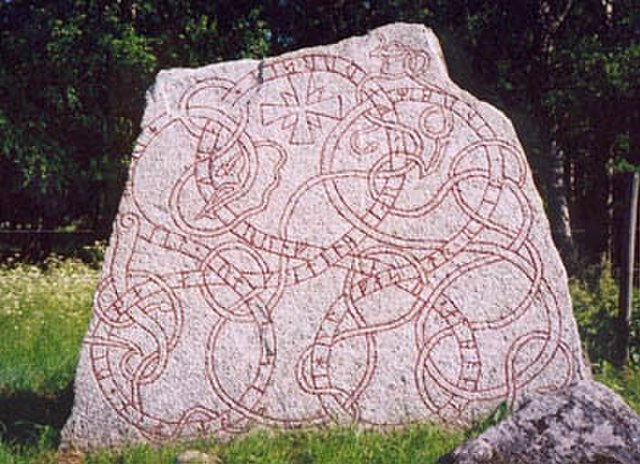Anglo-Saxon runes or Anglo-Frisian runes are runes that were used by the Anglo-Saxons and Medieval Frisians as an alphabet in their native writing system, recording both Old English and Old Frisian. Today, the characters are known collectively as the futhorc from the sound values of the first six runes. The futhorc was a development from the older co-Germanic 24-character runic alphabet, known today as Elder Futhark, expanding to 28-characters in its older form and up to 34-characters in its younger form. In contemporary Scandinavia, the Older Futhark developed into a shorter 16-character alphabet, today simply called Younger Futhark.
Anglo-Saxon runes
The left half of the front panel of the 7th century Franks Casket, depicting the Germanic legend of Weyland Smith and containing a riddle in Anglo-Saxon runes.
The Anglo-Saxon futhorc (abecedarium anguliscum) as presented in Codex Sangallensis 878 (9th century)
The Thames zoomorphic silver-gilt (knife?) mount (late 8th century)
A rune is a letter in a set of related alphabets known as runic alphabets native to the Germanic peoples. Runes were used to write Germanic languages before they adopted the Latin alphabet, and for specialised purposes thereafter. In addition to representing a sound value, runes can be used to represent the concepts after which they are named (ideographs). Scholars refer to instances of the latter as Begriffsrunen. The Scandinavian variants are also known as fuþark, or futhark, these names derived from the first six letters of the script, ⟨ᚠ⟩, ⟨ᚢ⟩, ⟨ᚦ⟩, ⟨ᚨ⟩/⟨ᚬ⟩, ⟨ᚱ⟩, and ⟨ᚲ⟩/⟨ᚴ⟩, corresponding to the Latin letters ⟨f⟩, ⟨u⟩, ⟨þ⟩/⟨th⟩, ⟨a⟩, ⟨r⟩, and ⟨k⟩. The Anglo-Saxon variant is futhorc, or fuþorc, due to changes in Old English of the sounds represented by the fourth letter, ⟨ᚨ⟩/⟨ᚩ⟩.
Runes
The inscription on the Einang stone (AD 350–400), reading [Ek go]ðagastiz runo faihido ("[I, Go]dguest painted/wrote this runic inscription"), is the earliest Germanic epigraphic attestation of the term.
An inscription using cipher runes, the Elder Futhark, and the Younger Futhark, on the 9th-century Rök runestone in Sweden
A Younger Futhark inscription on the 12th-century Vaksala Runestone in Sweden






![The inscription on the Einang stone (AD 350–400), reading [Ek go]ðagastiz runo faihido ("[I, Go]dguest painted/wrote this runic inscription"), is the](https://upload.wikimedia.org/wikipedia/commons/thumb/2/2c/Einangsteinen_inscript.jpg/640px-Einangsteinen_inscript.jpg)

